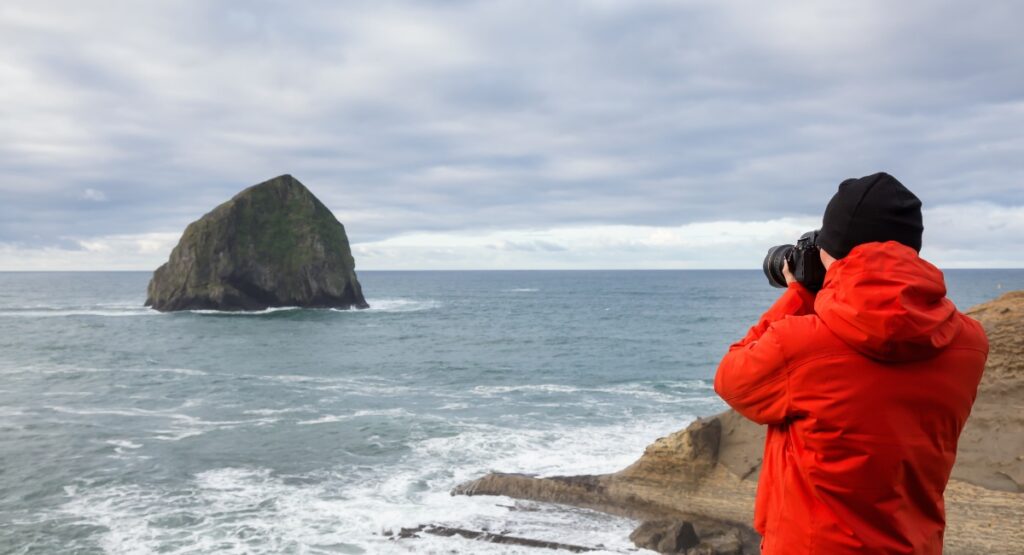10 Endangered Species of 2019
Wildlife has been around for millennia, serving so many purposes such as balancing the eco-system, as nature’s spectacle for tourists and serving as a guiding pathway to trace our history. In recent times, however, with increasingly growing human population and technology, sadly wildlife has felt the impact in negative ways with more and more species been pushed to the edge of extinction. Here is a look at some of the most endangered species on the planet.
This article focuses on megafauna (large wild animals above the weight threshold of 40kg excluding birds), giving details as to their description, where they can be found, threats to their population and their status as some of the most endangered and at-risk animals on the planet.
The Endangered Species list
The International Union for Conservation of Nature (IUCN) was founded in the year 1948 and is responsible for monitoring the status of the various arms of nature (especially wildlife) and outlining the necessary actions required to ensure its continuity. The IUCN drafted a list of thousands of animals facing population threats, with some species classified as ‘critically endangered’ animals. These are animals at the very brink of extinction with populations of a few tens to some thousands across the whole planet.
The Importance of Wildlife
Wildlife has been knitted tightly into natural processes and our eco-system. Hence, tampering with wildlife population can have adverse effects on the environment. Poachers (illegal hunters of wildlife) seem blind to this fact and see their victims as sources of meat and money, rather than creatures extremely capable in determining the fate of the eco-system. Megafauna are the most vulnerable victims considering their sizes, beautiful coats and breeding time.
A short list of megafauna is given below and even though thousands of species are known to be endangered, this would give an overview of both terrestrial life, aquatic life, and birds.
The Rhinoceros
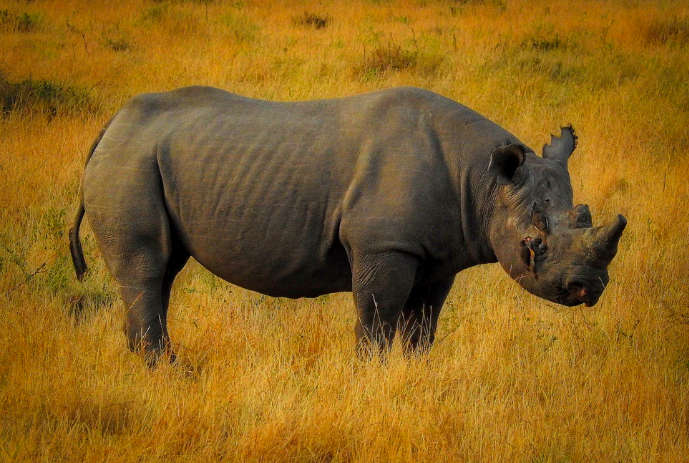
The rhinoceros is a large herbivorous mammal with the main population in parts of Asia and Africa). It grows to between 1.2-2.2 meters in length depending on the species and can weigh in at up to 750-3,500kg (1653-7,716lbs). The rhino can be easily spotted with its distinctive one or two horns, have leather skin that can be up to 1.5 cm thick.
Threats
Of the five different species of rhinos, three have been classified as ‘critically endangered’ and all fall under the IUCN red list. They are; the Black rhino, the Sumatran rhino, and the Javan rhino.
The rhinos are valued for their distinctive horns and leather skin. The rhino horn is as valuable as gold.
Population Status and Conservation Efforts
There has been a drastic decline in the population of rhinos in recent years. The Javan rhino stands at a population figure of 69, the black rhino at a little over 5,000 and the Sumatran rhino at around 80 adults. However, increased enactment of conservation laws and more funding in recent years, have proven worthwhile as poaching levels have started to decline in African countries such as Kenya and the Kruger National Park in South Africa, which is home to the majority of Africa’s rhino population.
The Vaquita Porpoise
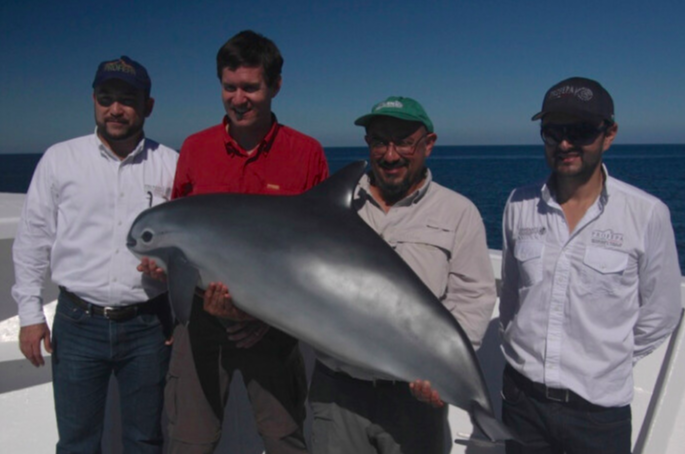
The Vaquita porpoise is an aquatic mammal found in the Gulf of California. It has a unique porpoise shape hence the name, with characteristic dark rings around its eyes, a line extending from its mouth to its dorsal fins and patches on its lips. They grow to about 1.40m and 1.35m in length for males and females respectively. Adults weigh in at about 43kg and can live for up to 20 years.
Threats
The Vaquita Porpoise is considered the most endangered marine mammal in the world with the IUCN placing figures of about only 10 left in 2018 and have been critically endangered since the year 1996. The use of gillnets to catch the totoaba (another species of fish close to extinction) has proven to be an ideal fit to catch the porpoise too, drowning them in the process.
Population Status
The population of the Vaquita was 5000 as at the 1930s and dropped drastically to 10 adults by 2018. In a bid to prevent complete extinction, the Mexican government enforced a temporary and then a final ban on the use of gill nets in 2017.
The Tiger
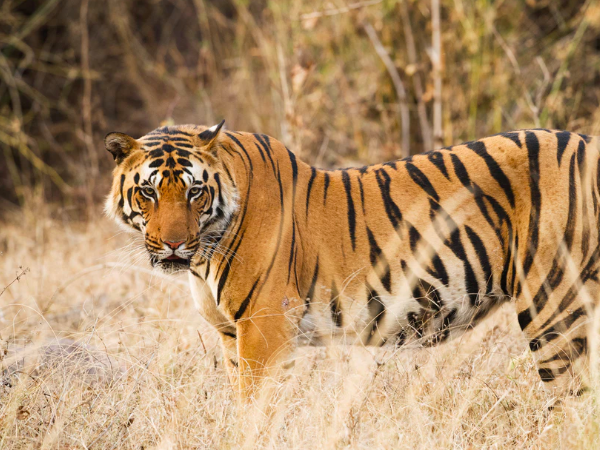
Where are they found?
Tigers are majorly found in small fragments in forest regions across Siberia, India, and Sumatra.
Threats
The tiger is on the IUCN red list and is considered endangered. Tigers are valuable to poachers for their fur, skin, their teeth, and bones. Habitat destruction by human activity has also led to a drastic decrease in their population.
Population Status and Conservation Efforts
In less than 25 years, tiger populations have dropped from an estimated 100,000 tigers in the wild to under 4200, and 3 subspecies have gone extinct in the past century. Right now, there are an estimated 4200 tigers left in the wild, and around 5000-7000 tigers living in captivity in the USA, says the WWF. There are approximately 370 Sumatran tigers left in the wild, 590 Siberian tigers, 2600 Bengal tigers, 200 Indochinese tigers, and 250 Malayan tigers.
Conservation efforts have been somewhat limited to land-trusts and national park protection, this has not stopped the overall trend of population decline. Read more about tiger facts, here.
The Orangutan
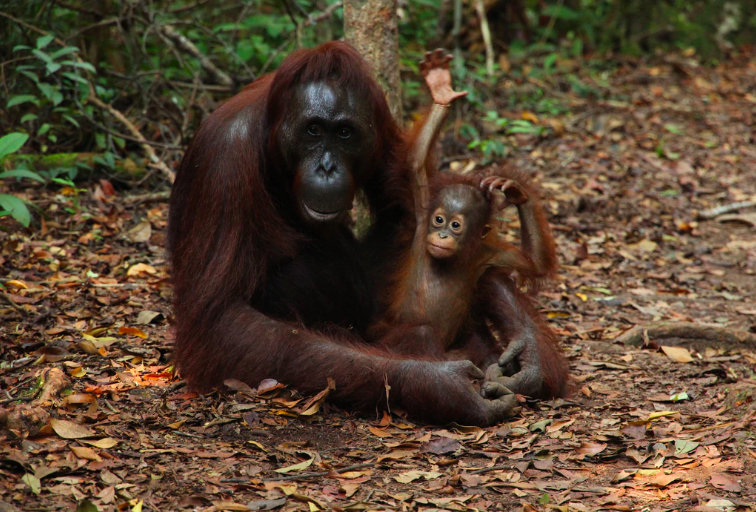
The orangutan is a member of the great ape family and is the largest mammal that climbs trees. Easily distinguished from other apes with their bright reddish-brown fur, they have powerful long arms used for climbing trees with ease. Interestingly, orangutans have DNA 97% identical to that of humans.
Habitat
Orangutans can be found in Sumatra in India and in Borneo. The Tapanuli orangutan, a newly discovered species is on the endangered list of the IUCN and is critically endangered.
Threats
The major culprit responsible for their population decrease is the destruction of their natural habitat. Being tree-lovers, human activity in recent years such as logging and mass deforestation has dwindled their population significantly. Also, the hunting of infants usually leads to the death of their mothers.
Population Status
Orangutans are classified as critically endangered by the IUCN due to the shocking loss of their habitat. According to the IUCN, there were about 100,000 individuals as at 2016 and a fall in the figure to as small as 47,000 was expected by the year 2025 with the newly discovered Tapanuli having fewer than 800 individuals left. The IUCN is calling for protected area status, to enable government protection.
The Whooping Crane
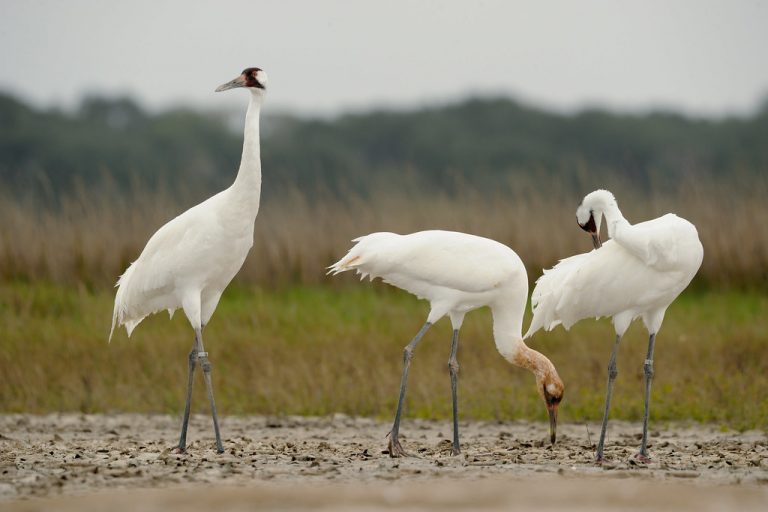
The whooping crane is the tallest bird in North America. Adult whooping cranes are white, have black pointy bills and a reddish-brown crown. They can stand up to 1.6m in height and can weigh up to 7.3kg for males and 6.2kg for females.
Habitat
The whooping crane is commonly found in grassy wetlands and they often perch at river banks during migration. They are also commonly seen scouting open grasslands and meadows. They are found in parks and refuges in the United States and Canada.
Threats
Presently, the main threats to the whooping crane population are habitat loss and predators, such as bobcats. Also, natural disasters have proven to deal a near-fatal blow to their resiliency.
Population Status
As at 1938, the population had dropped to a disheartening 15 adults. This called for several measures to be taken such as captivity breeding amongst others. As at 2018, the population was estimated to be a little over 500 including those in captivity.
Image Credit: USFWS | Creative Commons 2.0
The Asian Elephant
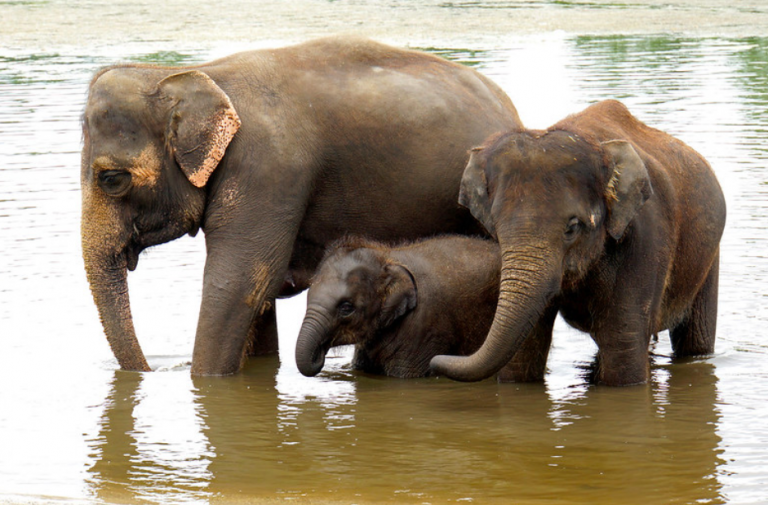
The Asian elephant is the second largest terrestrial megafauna in the world after the African bull elephant. They can achieve incredible dimensions of up to 6.4m in length and 3m in width and can weigh up to 5000kg. Like all elephants, they can be identified by their distinctive long horn-like tusks and their trunks that look like extended noses.
Habitat
They are widespread throughout the South-eastern part of Asia, India, Sumatra and Borneo, China among other Asian countries.
Threats
The Asian elephant has faced serious population threats due to the loss in habitat from human activities, depleting the forests they call home. The end result being that more elephants end up dead as humans want to protect their crops and their lives as encounters are more frequent. Another source of threat to elephants is poaching for their tusks, meat, and skin.
Population Status
The population of Asian elephants today stands at a figure of between 35,000-40,000 individuals. This signifies a significant drop as compared to its initial figure 0f 100,000 in the 1900s. You can read more about Asian elephant facts, here.
Image Credit: Dennis Jarvis | Creative Commons 2.0
The Saola
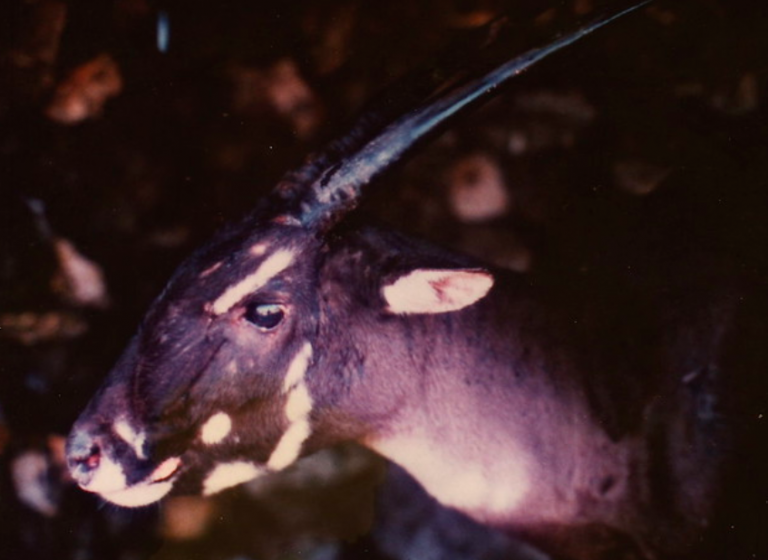
This extremely rare animal was discovered in 1992 May. It has two parallel pointed long horns and brilliant white patches on the face. Adults have dimensions of about 1.4m in length and weigh in at about 90kg.
Habitat
They saola have only been found on the mountainous regions in Laos and Vietnam.
Threats
The sources of threats to the only recently discovered population are loss of habitat and ensnarement in hunter’s traps meant for catching other animals. They are also at risk of poaching due to their beautiful fur and horns. They are on the IUCN Red List and are classified as critically endangered.
Population Status
There are estimated to be between only a few dozens, to a hundred saola at most still alive.
Image Credit: Global Wildlife Conservation | Creative Commons 2.0
The Cross River Gorilla
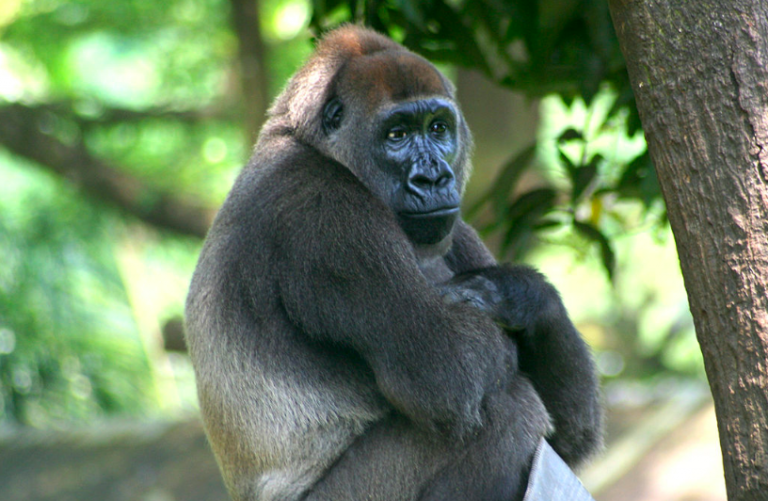
The cross river gorilla was discovered in 1904 and was later named the rarest great ape after population surveys were done in 1987. The average adult stands at an impressive 1.7m tall and tips the scales at about 170kg (can reach 200kg) on average for males.
Habitat
The cross-river dwells in the rainforests engulfing the Nigerian-Cameroonian border.
Threats
Like most great apes, they face serious population threats arising from loss of habitat by encroachment from human activity. The cross river gorilla has been classified as critically endangered by the IUCN due to the low population left. They are also susceptible to poaching as wildlife protection laws in these countries are not taken seriously.
Population Status and Conservation Efforts
The population of the cross river gorillas stand at an extremely low figure of fewer than 250 adults and are near extinct. Organizations like the World Wildlife Fund (WWF) are trying to set up protected areas in cooperation with the government were tampering with the habitat and population of the gorillas would be illegal.
Image Credit: Julie Langford | Limbe Wildlife Centre
The Amur Leopard
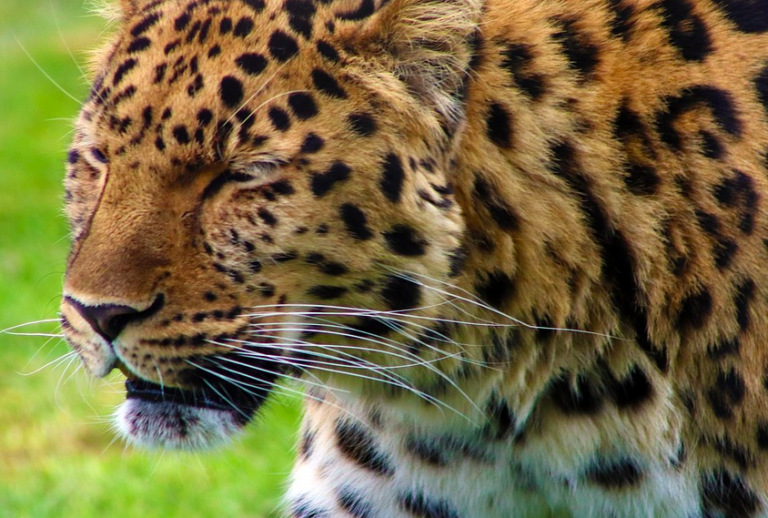
The Amur leopard is a leopard species found in some parts of China and Russia expanding the bordering lands. The average adult has dimensions of around 1.2m in length and a spectacularly long tail of up to 90cm in length. The average male can weigh up to 47kg and females up to 40kg. Slightly different from most leopards, they have beautiful golden fur with dark spots.
Threats
The Amur leopard is classified as critically endangered as they are only a little over a dozen left. They are under high risks of poaching due to their beautiful fur.
Population Status and Conservation Efforts
The current population of the Amur leopard stands at over 84 adults according to the WWF. This is a significant improvement from 2007 where there were only about 16 adults alive and this has been achieved in no small part to the efforts of the WWF.
The Hawksbill Sea Turtle
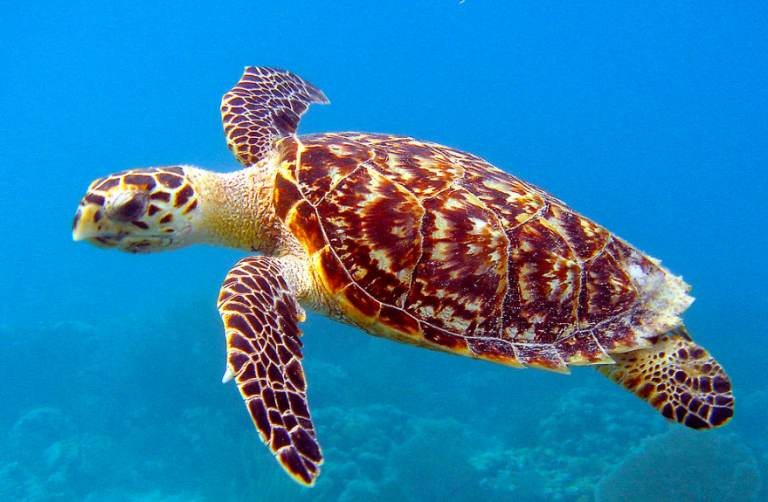
This spectacular ocean creature is the only living member of the genus of turtles Eretmochelys, achieving dimensions of up to 0.89m in length and up to 70kg (154 lbs.) weight. They have a characteristic beak-like mouth structure, hence the name.
Habitat
They dwell in most oceans and coral reefs around the world such as the Coastal East Africa, the Mesoamerican Reef and the Coral Triangle.
Threats
The Hawksbill sea turtle population has faced a lot of dangers arising from their susceptibility to being trapped in gillnets and fishhooks and also their high value to hunters due to their beautifully patterned overlapping shells used in illegal wildlife trade.
Population Status and Conservation Efforts
The present worldwide population status of the hawksbill turtle stands at about 15,000 nesting females left. With an annual mortality rate of 4,600 mainly from fishing bycatch, there is a serious threat to their population.
Conservation efforts made by the WWF include the production of better-shaped hooks for fishermen that were unlikely to catch the turtles but still trap their fish. Also, satellites have been used to monitor their movement.
Conclusion and The Way Forward
In the end, this brings us to the realization that if care is not taken, wildlife as we know it will be driven to extinction and our future generations would be left with nothing but pictures and fossils. Humans, gifted with the ability to innovate and invent, are the main culprit behind the terrible fate of present wildlife. In all, there is a need for balance between human development and wildlife conservation. Various organizations such as the IUCN and the WWF have risen to the task, by creating enlightenment, monitoring populations, partnering with governments to establish protected areas for wildlife, and serving as platforms for funding to aid in wildlife conservation such as the Integrated Tiger Habitat Conservation Program (ITHCP).
Wildlife and its habitat should be valued and protected and seen as an intricate and important part of nature and not as walking ornaments or objects for sport. With this mentality, people would learn to appreciate this nature’s gift and wonders of evolution and their protection would be guaranteed.



